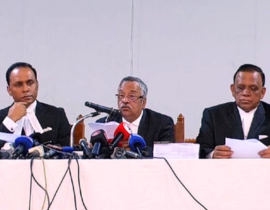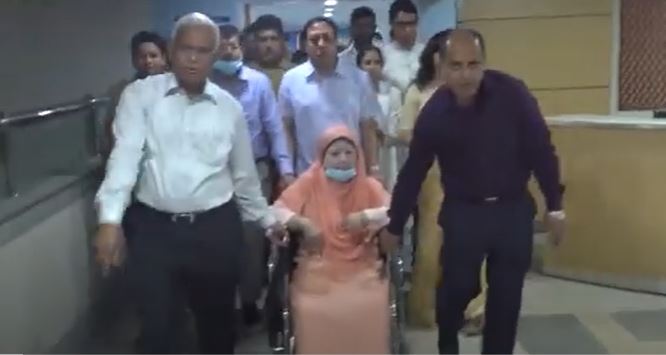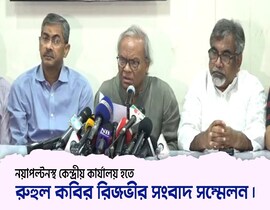Bangladesh Jatiotabadi Jubodal Bogra Home About Us Policies Constitution 31 Points Resources Reports Notices Publications Party Achievements Latest News Home About Us Policies Constitution 31 Points Resources Reports Notices Publications Party Achievements Latest News Facebook Youtube Instagram X-twitter Telegram Tiktok A few days ago, after the devastating floods in the eastern part of the country, from the end of last month to the first week of October, various areas in the greater Mymensingh and northern regions were flooded by severe floods. Millions of people have been stranded by water, and their suffering has increased significantly. Experts have expressed the opinion that this terrible flood was caused by seasonal rain and upstream hill runoff. https://www.youtube.com/watch?v=itS–CSJvyU October 20, 2024 Press Conference Advocate Ruhul Kabir Rizvi, Senior Joint Secretary General – BNP Dear Journalist Brothers and Sisters, Assalamu Alaikum. I extend my heartfelt greetings and gratitude to you all. Extensive areas in Mymensingh, Sherpur, Jamalpur, and Netrokona districts were submerged by floodwaters. In the Mymensingh division, rivers like Kangsha, Jinji, and the Old Brahmaputra, along with the Someshwari, overflowed their banks, flooding nearby areas. The water levels of the Bhogai River in Sherpur, Nakuagao, and rivers in Jamalpur district flowed above the danger level. Farmers in Sherpur said they had not seen such a devastating flood since 1988. Although the severity of the flooding in the low-lying areas along these rivers is decreasing, significant improvement is yet to be seen. Due to heavy rainfall, large-scale flooding was observed in the greater Mymensingh division, and in the Sylhet division, rivers like Surma and Kushiyara saw rising water levels, indicating another potential flood. Many areas in Fulbari Upazila of Kurigram still remain waterlogged. In the northern region’s Rangpur division, although the flood situation along the Brahmaputra-Jamuna river basin and its upstream areas wasn’t extremely severe, some areas were affected. However, the sudden rise of water in rivers like the Padma in the northern region posed a flood risk. Farmers cultivating transplanted Aman rice and vegetables in Sherpur and Netrokona were the most affected by the devastating floods. According to government sources, in just five upazilas of Netrokona district, 20,909 hectares of transplanted Aman fields have been completely destroyed. Over 70,000 farmers have been affected, with losses estimated at nearly 400 crore taka. On the other hand, vegetable farming on 160 hectares has suffered, causing financial losses to 5,320 farmers, totaling 13 crore taka. Approximately 1,730 ponds and fish farms have been submerged, with losses amounting to 8 crore taka. In Sherpur, 177,080 farmers have been affected. This year, 95,790 hectares of land were under Aman cultivation, of which 37,155 hectares have been destroyed by the floods. Friends, Despite the severe flooding and heavy rainfall causing widespread waterlogging in areas like Kushtia, Jessore, and Khulna, there has been a noticeable lack of government action to alleviate the suffering. Unlike the significant government and private initiatives seen during the floods in the eastern part of the country, the current response has been lacking. Swift rehabilitation measures must be taken for the affected farmers and fishers. The government must take the lead in addressing the dire situation faced by flood-affected families. To ensure a stable supply of essentials like rice, lentils, vegetables, fish, meat, and eggs in the market, the government must act. Support must be extended to farmers and fishers through increased supply or incentives for fertilizers, pesticides, and seeds. Efforts must also be made to restore essential services such as housing, sanitation, electricity, and nutrition to prevent shortages in these crucial areas. To prevent malnutrition among children in this flood-affected crisis, the government must act swiftly. The government must also be proactive in ensuring adequate medicine supplies to treat illnesses caused by the floodwaters and waterborne diseases. Bangladesh Nationalist Party – BNP’s Demands: – Provide comprehensive relief assistance to those whose crops have been destroyed by the floodwaters, until the next harvest. Interest-free agricultural loans, along with free distribution of fertilizers, seeds, pesticides, and irrigation fuel, should be made available for the next crop. Additionally, seeds for winter crops (Rabi crops) should be distributed to ensure their production before the next harvest. – Assess the losses and provide interest-free loans and other assistance to farmers whose fish, poultry, duck, and livestock farms have been destroyed by the floodwaters. Efforts should be made to help them reestablish their farms. – Identify those whose houses have been partially or fully destroyed by the floods and assist them in rebuilding. People whose villages, neighborhoods, and communities have been washed away due to river embankment breaches and have become displaced should be resettled in government khas land or rehabilitation projects. – Repair and reconstruct roads, mosques, madrassas, temples, and other religious and educational institutions that have been partially or completely destroyed by the floodwaters. – Provide educational materials and assistance to students whose study materials have been destroyed by the floods through government initiatives. – As the floodwaters recede, the government must ensure free treatment for those suffering from diseases. If necessary, medical camps should be set up in affected areas to provide treatment. Thank you all. Allah Hafej.




